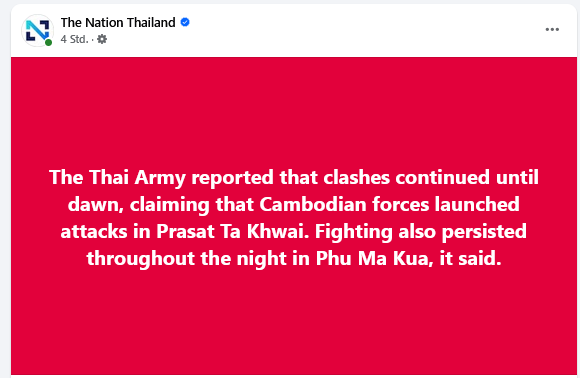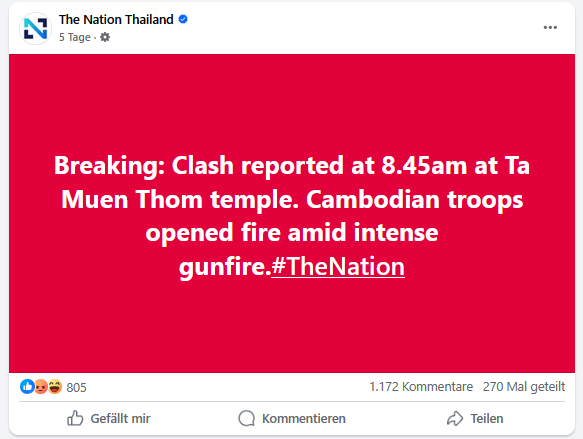Who owns the temples from the Thailand/Cambodia border conflict?
In most cases, the disputed temples in the border conflict belong to the Kingdom of Cambodia according to the only legally valid agreement, as the temples are simply located on Cambodian territory (see below).
The temples are also always mentioned in Thai media with the Cambodian name, such as “Prasat Ta Krabey”:

“Prasat” is a Cambodian word meaning “temple”, “Ta” means something like “grandfather”. “Krabey” means “buffalo” in Cambodian, while “Khwawi” means “buffalo” in Thai.
The “Ta Muen Thom” temple, which is often mentioned during the fighting, is also always referred to in Cambodian:

“Ta” means grandfather, “Moan” means “chicken” and “Thom” means “big”. Loosely translated, the temple would therefore mean “big chicken grandfather”. All 3 words bear absolutely no resemblance to Thai. This should also indicate that these are Cambodian temples, which were previously located on Cambodian territory.
Who do the temples belong to according to the 1907 agreement?
According to a border agreement between Siam (now Thailand) and France in 1907, most of the disputed temples, in particular the Preah Vihear Temple, were clearly awarded to Cambodia. According to this map, the Ta Moan Thom temple is also clearly located on Cambodian territory. This internationally recognized border demarcation, which is mainly based on French maps from 1907, is still the basis for Cambodia’s territorial integrity today. Cambodia is considered the rightful successor to the French colonial administration and is therefore entitled to preserve the historical and cultural heritage of these temples. In return, Siam received the province of Trat and the district of Dan Sai back in this territorial exchange.
Despite these clear agreements, tensions repeatedly arose because Thailand drew its own borders on unofficial maps, which deviated from the internationally recognized lines. The Preah Vihear temple in particular was shown on Thai maps outside the border established in 1907, even though the International Court of Justice (ICJ) had already clearly ruled in 1962 that the temple belonged to Cambodia. In later conflicts, for example between 2008 and 2011, Thailand also claimed adjacent areas that Cambodia considers to be part of its territory. Cambodia consistently invokes the historical agreements with France and international rulings, while Thailand repeatedly refers to national maps, which are not valid under international law.
In the current conflict, Cambodia is once again striving for a peaceful solution. It is attempting to have the remaining disputed border areas resolved through an international constitutional procedure – for example before the International Court of Justice. However, Thailand is trying to block this path. This is due to the fact that Thailand has already suffered two defeats before the ICJ in the past under international law: firstly, the 1962 ruling that awarded the Preah Vihear temple to Cambodia and, secondly, the 2013 clarification that also awarded the adjacent area to Cambodia. From the Cambodian perspective, international mechanisms are therefore the only reliable way to resolve existing differences permanently and without violence.